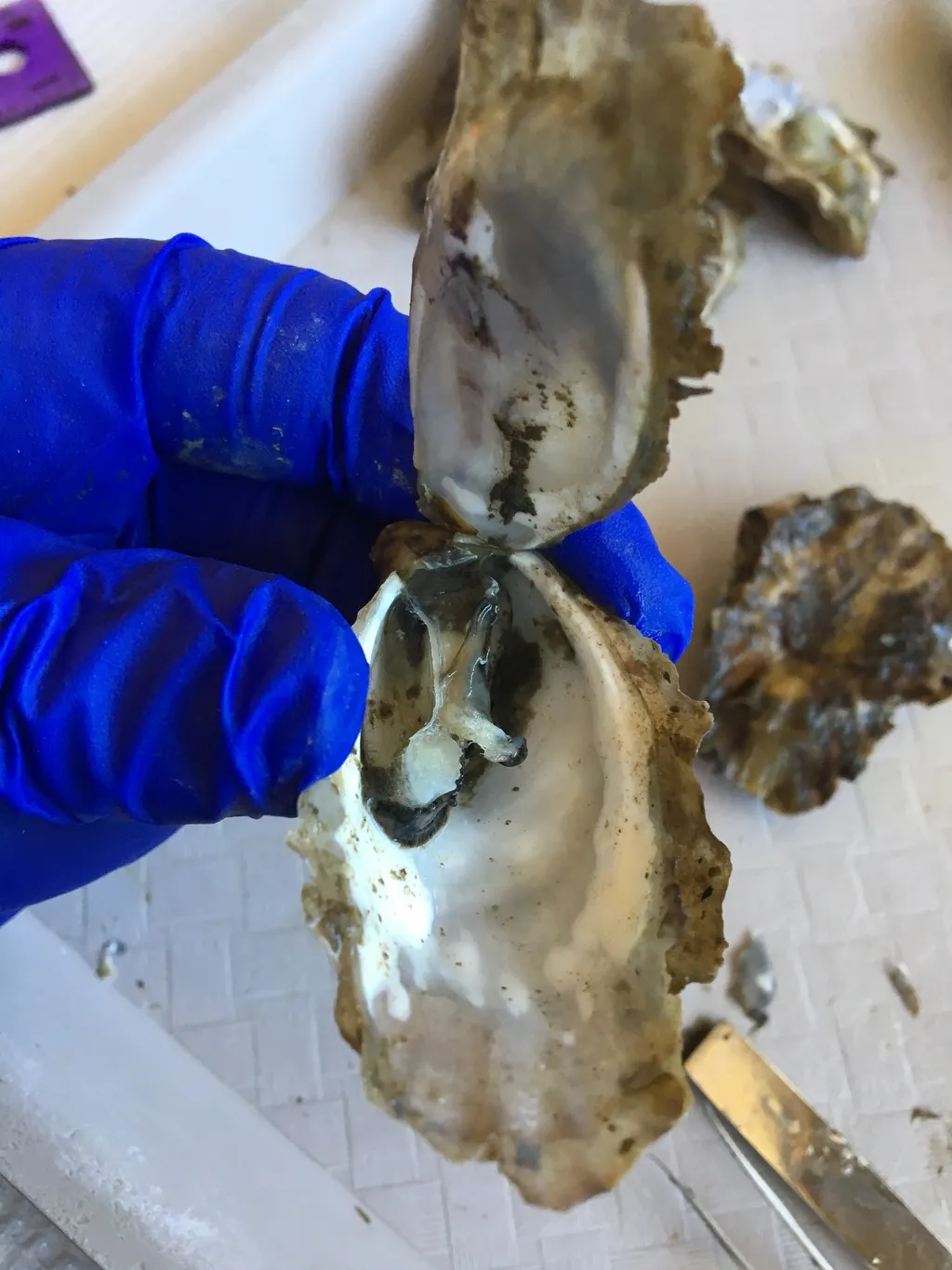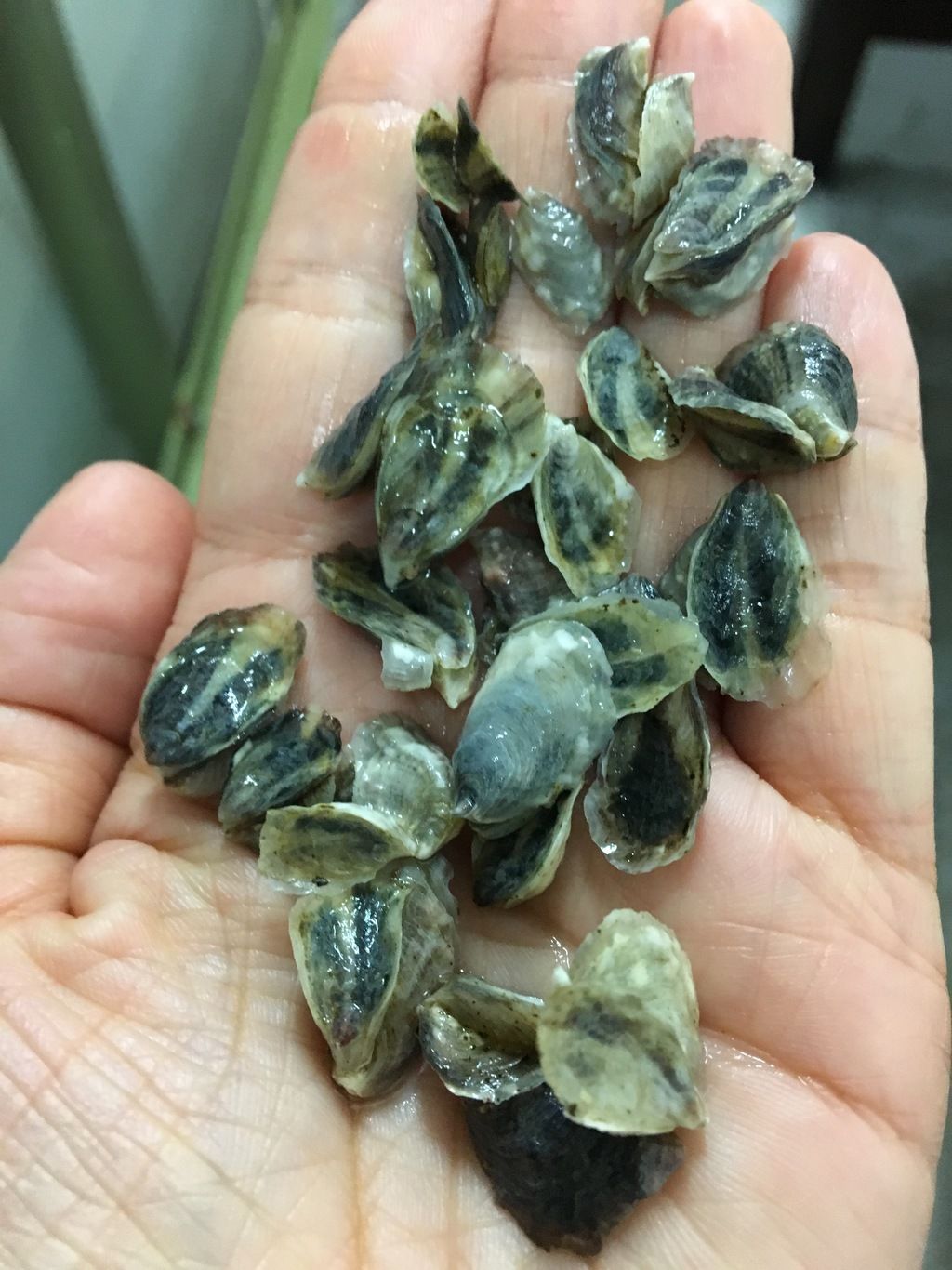Oysters Can Get Herpes, And It’s Killing Them
A deadly virus threatens to decimate oyster populations around the world
/https://tf-cmsv2-smithsonianmag-media.s3.amazonaws.com/filer/af/c9/afc90d80-3963-409d-bb65-8f64e0457b87/cn4hh4.jpg)
Oysters, a delicacy eaten on most coastlines of the world, are a multi-billion-dollar industry. They also are intriguing to study from a health perspective. Oysters feed by filtering tiny plankton from the surrounding water, processing up to 50 gallons per oyster daily. In doing so, they improve water quality and make their ecosystems healthier. But the water that they grow can be filled with disease-causing microorganisms that can affect both oysters and humans.
Today a deadly herpes virus, Ostreid herpesvirus 1 (OsHV-1), is threatening Pacific oysters (Crassostrea gigas), the world’s most popular and valuable oyster species. It is almost certain to spread more widely in our globally connected world.
I know what you’re thinking: “Oysters get herpes??” Yes, and they can also can get sick from other types of pathogens and stresses. But you won’t contract this virus from eating an oyster, whether you enjoy them on the half-shell or cooked. OsHV-1 can infect other bivalve species, like some animal herpes viruses that can cross species barriers, but it is genetically distinct from other animal herpes viruses and does not infect humans.
With support from the NOAA Sea Grant aquaculture program, I’m working with a diverse team that includes researchers, regulators and outreach specialists in the United States and abroad to better prepare the U.S. oyster industry for the spread of this virus.

**********
Pacific oysters are native to Asia and are the most popular and valued oyster for aquaculture globally. Humans transferred them from their native range to multiple grow-out areas globally, including France, the United States and Australia. They are the primary species grown on the U.S. West Coast, whereas both wild and cultured Eastern oysters grow on the East and Gulf coasts. In contrast to Eastern oysters, Pacific oysters were relatively resistant to infectious diseases until OsHV-1 emerged in the early 1990s.
Herpes is often fatal to Pacific oysters. That’s especially true for OsHV-1 microvariants – mutant variants of OsHV-1 which are more virulent than the original reference strain. These viruses are spreading globally, causing mass mortalities of Pacific oysters.
An OsHV-1 microvariant was first detected in France in 2008, where it killed 80 to 100 percent of affected oyster beds. Since then, similar variants have caused mass mortalities of oysters in many European countries. A 2010 outbreak in England killed over eight million oysters.
OsHV-1 microvariants also infect Pacific oysters in New Zealand and Australia. Their spread in Australia, in particular to Tasmania, has crippled the Australian Pacific oyster aquaculture industry.
**********
U.S. oyster growers are strongly concerned about the spread of OsHV-1 microvariants globally. I was part of the team that first detected OsHV-1 in Tomales Bay, California. To date the virus has been detected only in oysters in Tomales Bay and an adjacent bay, and no microvariants have been found yet in U.S. waters. The California OsHV-1 causes mortalities of young Pacific oysters, but is thought to be less virulent than OsHV-1 microvariants.
Given the spread of the OsHV-1 microvariants elsewhere around the world, it may only be a matter of time until they reach U.S. coastal bays or other nonimpacted oyster growing areas. We spent the summer of 2017 conducting experiments in Tomales Bay to determine whether any cultured U.S. oysters species are resistant to OsHV-1, and soon will also conduct laboratory challenges with OsHV-1 microvariants.
Once OsHV-1 is established within a bay, mass oyster deaths typically occur each year during the summer when water temperatures are warm. The situation is analogous to a human who is infected with herpes and periodically get cold sores. Normally the virus is latent (present at a low level) and does not cause cold sores. But after a stressful situation, the virus replicates and cold sores emerge.
Not all oysters die of herpes, and if OsHV-1 behaves like other herpes viruses, it probably remains present latently within infected oysters’ tissues and is reactivated after a stressful event. For oysters, most of the evidence for virus reactivation points to warm summer water conditions.
**********
We can’t vaccinate oysters, and even if antibiotics were effective against viruses, they are not permitted for treating oysters in the United States. Though oysters have an innate immune system that destroys foreign invaders, it lacks an adaptive response, including cells that “remember,” recognize and destroy specific pathogens, as human B or T lymphocytes do. Most vaccines rely on this “immune memory” to be effective. Recent research indicates that oysters’ innate immune systems can be stimulated by a virus mimic, but we do not know whether this effect is long-lasting.
The most effective strategy to date has been developing disease-resistant oyster lines, which can limit both mortalities and oysters’ susceptibility to infection. But this approach involves exposing healthy oysters to the virus – and moving oysters infected with OsHV-1 to naive (disease-free) areas could spread the virus. This means that we can use this approach only in places where OsHV-1 already exists.

Toward that end, breeding programs in locations including France, New Zealand and Australia are working to develop OsHV-1-resistant Pacific oysters. A complementary approach is to expose oysters and determine genes involved in OsHV-1 resistance. I am currently working with two strains of OsHV-1 – the California virus and a microvariant in France – to determine OsHV-1 resistance genes, including a collaboration with the Ifremer station in La Tremblade, France.
The most effective way to limit damage in new locations from OsHV-1 is to limit its spread. However, we also want to be ready in case OsHV-1 microvariants spread to the United States. Beyond their cash value and the benefits that oysters provide by filtering water, oyster reefs provide food and habitat for many commercial fish species. Oysters can’t move themselves out of harm’s way, nor can we move all susceptible oysters, so we need to protect them where they grow.
This article was originally published on The Conversation.
Colleen Burge, Assistant Professor, Institute of Marine and Environmental Technology, University of Maryland, Baltimore County